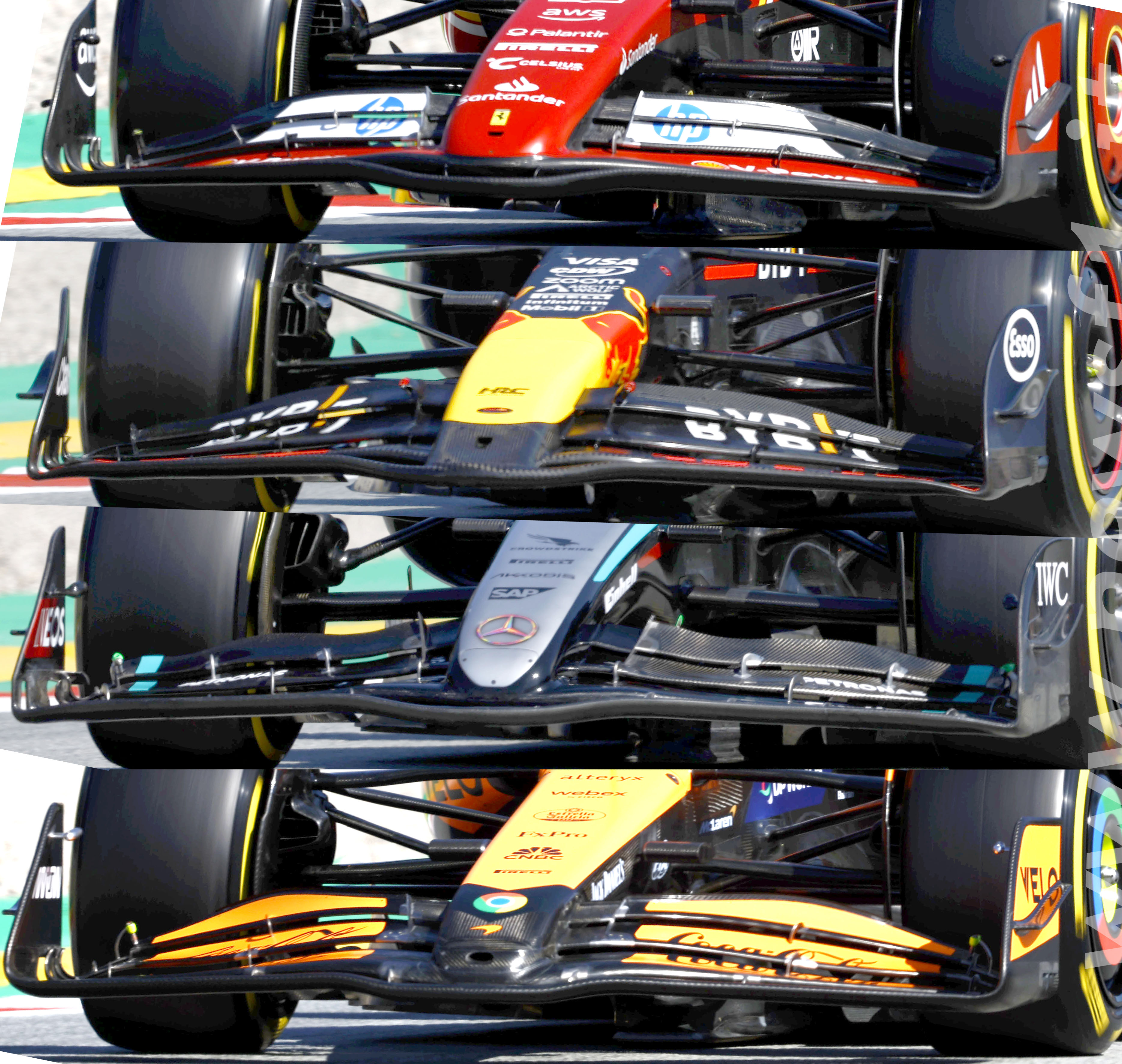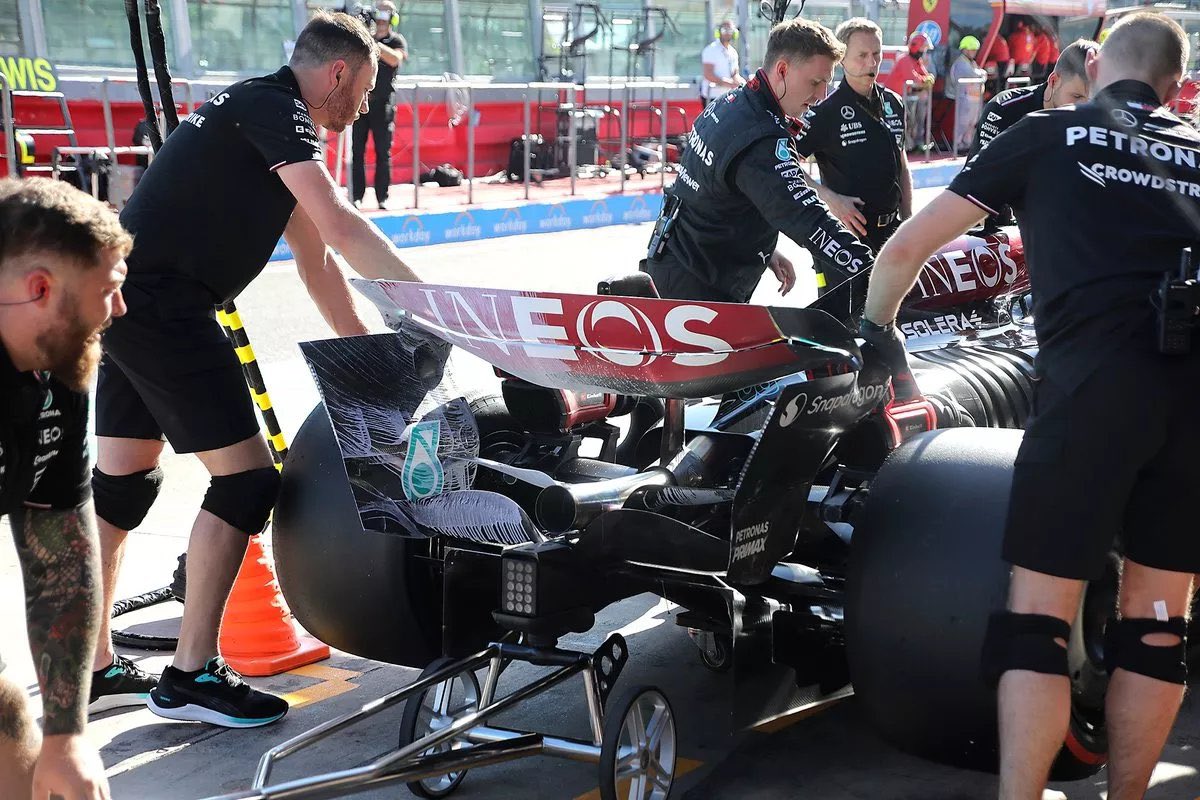venkyhere wrote: ↑25 Jun 2024, 12:56
I have observed this 'under-winging' compared to McL/RB, but I don't think it was only for Barcelona, I think it's been the case over many races.
What exactly do you think the issue is ? Is the Ferrari floor tunnel roof lower than the other lead teams ? (asking because after an entire season and a half, heard the drivers talking about 'bouncing' in Barcelona). The amount of throttle lift through T14 was way more than any of the other three top teams.
I thought towards end of 2023 the Ferrari floor was beautifully working.
Puzzling.
As we are comparing different cars, I'm moving this conversation to appropriate thread

Things are very nuanced when it comes to wings between those 3 teams. I'll just stick to comparing Ferrari and RB and I'll make a couple of assumptions on bodywork drag to later use it to compare wing level
- Ferrari launch spec bodywork was higher drag than RB (fairly conclusive)
- RB Japan update cut drag in undercut and added drag with upper inlets, net zero gain (fairly conclusive)
- Ferrari Imola bodywork cut their drag down to RB level (verified by Monaco and Canada Q Top Speeds on comparable wing levels)
- Both Ferrari and RB improved drag with Barcelona updates and remained on equal level (only one weekend to compare for now, but seems a good guess)
Now if we return this to wing level comparisons, we still have a difference with beam wings which are impossible to evaluate by eyes alone, but we are here to speculate... We have a few notes regarding wings to add:
- Ferrari mid-load RW (races 1-7 + Canada) is a fraction less loaded than RB mid-load RW (races 1, 4, 5, 9)
- Ferrari mid-high load RW (race 10) is slightly bigger than RB mid-load RW and smaller than RB high-load (races 8+10)
- RB low-mid-load RW (races 2, 3, 6, 7) is less loaded than Ferrari mid-load of course
So now when we take this into account and compare Q Top Speeds the situation on wing/aero load in my view is like this (do note different ride heights mean different floor aero map and using exact same wings can still cause variations in Top Speed). Wing load levels:
- Bahrain, R1: Ferrari = RB
- Jeddah, R2: Ferrari > RB
- Australia, R3: Ferrari > RB
- Suzuka, R4: Ferrari = RB
- China, R5: Ferrari = RB
- Miami, R6: Ferrari = RB
- Imola, R7: Ferrari > RB
- Monaco, R8: Ferrari = RB
- Canada, R9: Ferrari = RB
- Barcelona, R10: Ferrari < RB
(this was probably the most unnecessarily detailed analysis I ever made here

)
From everything we've seen so far, Ferrari had less wing than RB only in Barcelona, both visibly and judging from Top Speed figures. McLaren was something similar to Ferrari because they had bigger rear wing but smaller beam wing. I guess they worked their floor less than Ferrari and RB because of that, allowing Norris a bit softer suspension to attack those curbs (but it's probably something else with suspension setup along with that)
With Barcelona update, Ferrari lowered the front/inlet tunnel roof quite visibly and this means increasing raw floor downforce, which has to be handled very carefully since all cars are running very low after 2023 floor edge and throat height increase. RB had to reduce wing levels in Australia and Imola to accommodate floor performance and acceptable ride quality.
Ferrari confirmed their setup wasn't optimal in Barcelona Q and R and formu1a.uno reports they simply raised their car after FP3 because they were afraid of bouncing in the race and you shouldn't change too many things between FP3 and Q1 because you can't afford to make a setup mistake. In spite of that, Leclerc was only slower than Lando in stints 2 and 3 and practically matched Verstappen.









